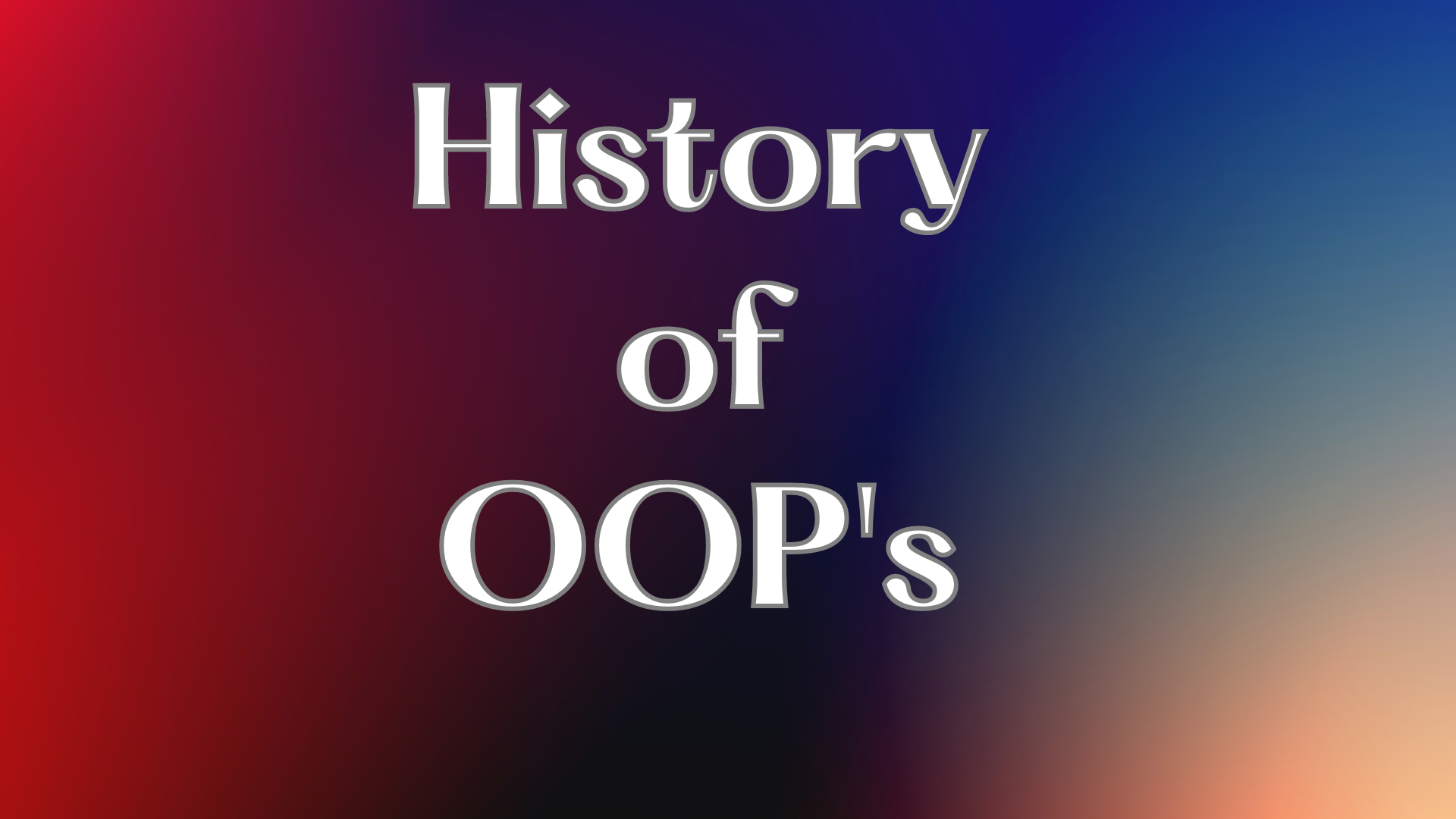History of OOP's Concept
 Kartik Sharma
Kartik SharmaTable of contents

Object-Oriented Programming concept was coined by Alan Kay in 1966 or 1967 while he was at grad school. The idea behind this was to use encapsulated mini-computers in software, rather than direct data sharing they communicate via message passing. The first programming language which recognized as "Object-Oriented" was Simula, in 1965. Simula language featured objects and introduced classes and also virtual methods. The work on simula language was done by Ole-John Dahl and Kristen Nygaard at the Norwegian computing center in Oslo, Norway.
Smalltalk was more Object-Oriented than Simula. Smalltalk was developed by Alan Kay, Dan Ingalls, Adele Goldberg and others at Xerox PARC in 1970s. It contains everything in the form of Objects, classes, integer and blocks.
In a 2003 email exchange, Alan Kay actually defines what he meant when he called smalltalk as "Object-Oriented" :
"OOP's to me means only messaging, local retention, protection and hiding of state-process, and extreme late-binding of all things" ~Alan Kay
Alan Kay put the three main ingredients of OOP's :
- Message passing
- Encapsulation
- Dynamic binding
The next step in the development of OOP's started in January of 1991 when James Gosling, Patrick Naughton, Bill Joy, Mike Sheridan and several others met in Aspen, Colorado, to discuss idea for the stealth project. After that they developed a new Programming Language named Java in 1995.
Example:
Object-Oriented Programming was also important for development of GUI (Graphical User Interface).
The cocoa structure that exists in the Mac OS X is a good example of a dynamic GUI which works with Object-Oriented Language.
Subscribe to my newsletter
Read articles from Kartik Sharma directly inside your inbox. Subscribe to the newsletter, and don't miss out.
Written by
